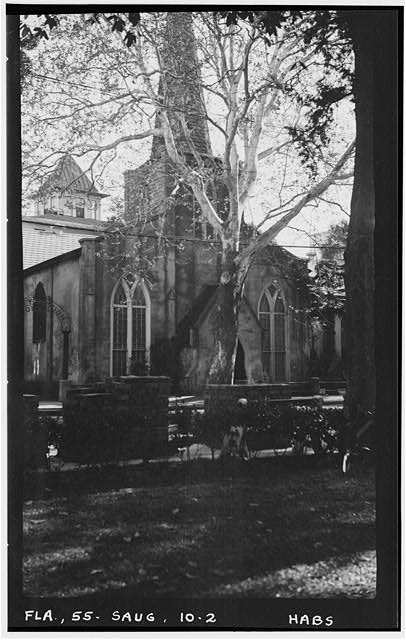 History is tough to correct. Once a good story gets going almost nothing can change it. St. Augustine is, of course, full of these “stories.” We have the Geronimo in St. Augustine. Never happened. We have a tunnels under King Street for Henry Flagler to go visit is “numerous” mistresses. This list just goes on and on. Sometimes people get upset if their “story” is not part of your history and it’s almost impossible to change anyone’s mind about their “story.” (Actually I gave up trying a long time ago.) From tour leaders to ghost tours to ordinary people these stories live and grow from year to year like the old game of gossip.
History is tough to correct. Once a good story gets going almost nothing can change it. St. Augustine is, of course, full of these “stories.” We have the Geronimo in St. Augustine. Never happened. We have a tunnels under King Street for Henry Flagler to go visit is “numerous” mistresses. This list just goes on and on. Sometimes people get upset if their “story” is not part of your history and it’s almost impossible to change anyone’s mind about their “story.” (Actually I gave up trying a long time ago.) From tour leaders to ghost tours to ordinary people these stories live and grow from year to year like the old game of gossip.
To complicate this when a church does this it’s even more difficult to stop. One of the reasons I don’t like to do church history (even as a minister) is that most church history are seamless good tidings for the church (even when it dies and goes on to its greater glory). They simply refuse to talk about anything that may have a controversy to it.
The good news is that every now and then two churches get into an argument and some small glimmer of humanness shines through. This is what happened at the American takeover of St. Augustine when all the land titles were up in the air. Somehow, still unknown, the Episcopalians got title to the lot where Trinity Church now stands. Their argument was that this was where the Anglian Church was located when the British were in St. Augustine. (It wasn’t.) The Catholic church claimed this property as “The Bishop’s House” of the first Spanish period. Unfortunately, the Catholic church was under attack for all its property including the Cathedral. All these properties were viewed as properties of the Spanish Crown. The Congress solved the problem by awarding the Catholic parish the church building and the cemetery. The Episcopalians got the lot where Trinity is located and the other pieces of property stayed in private (Numbre de Dios) or government hands (St. Francis Barracks). The Catholic parish appealed this for years (Bishop Verot eventually bought Numbre de Dios.) and the Episcopalians claimed that their church was located on the site of the first Anglian Church.
How long does this story go on? For Trinity I uncovered it again in a travel guide in the 1880s and thought that would be the end of it until I read a paper in 1937 where the same story was mentioned.
Every now and then even church history get interesting.
See the Cathedral at: http://www.drbronsontours.com/bronsoncathedral.html
See Trinity Episcopal at: http://www.drbronsontours.com/bronsontrinityepiscopal.html
Leave a comment